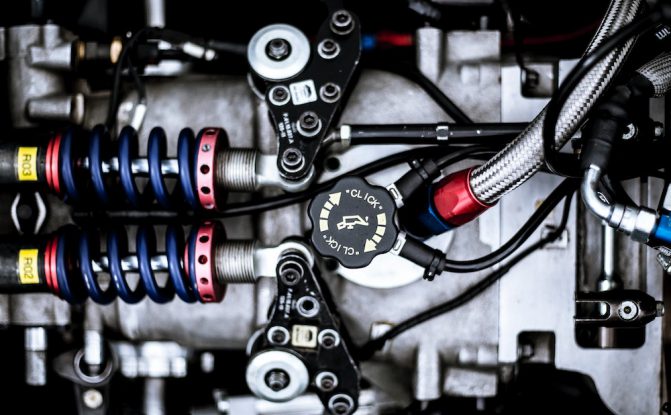Drivers desire a smooth ride in their vehicles, which is made possible by shocks and struts. They operate well in conjunction with the car’s suspension and help to reduce the impact of external variables on the vehicle. The symptoms of bad shocks and struts indicate that immediate action is required. We’ll go over why shocks are necessary and how much rear shocks replacement cost in this article.
These parts quickly wear down due to their regular use, and the impact of poorly maintained roadways makes this much worse, like potholes and bumps. A terrible ride would occur from driving a car with bad shock symptoms and worn-out shocks (or bad shocks).
However, several drivers are unaware that they are driving with worn struts and shocks until they notice poor shocks. Struts and shocks keep the car suspension attached properly, so the signs are easy to notice.
As a result, the loss of a fully working strut or shock would impact the car, even if not immediately. As a result of the deteriorated strut and shock, you may soon notice some vibration and decreased traction. Hence, why considering the rear shocks replacement cost is crucial.
- Rear Shock Absorbers
- Shocks vs Struts
- Why Are They Important?
- Signs Of Failure
- Replacement Cost
- Final Verdict
What Are Rear Shock Absorbers In A Car?
Your car’s shock absorbers are critical to the comfort and drive quality of your vehicle. This gas or oil-filled tube is responsible for leveling out your car’s passage over any potholes, humps, or gaps in the road and is compressed by a piston.
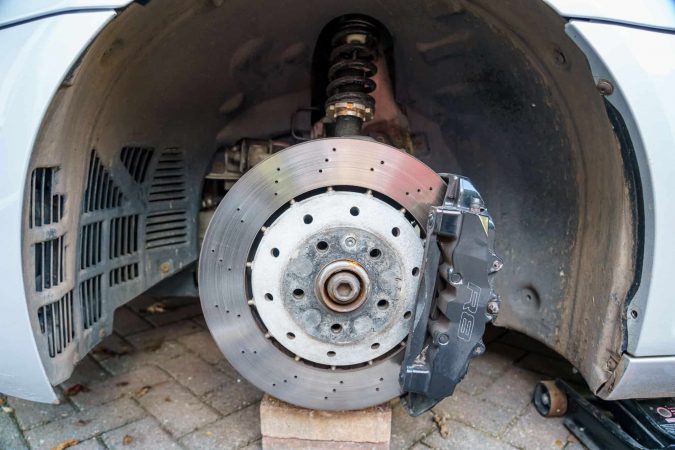
Prices will always differ between mechanics, and dealership prices can be significantly higher. It’s a good idea to shop for the most outstanding deal, and you should always strive to choose a trustworthy business. Are you willing to take excessive chances with your car to save a few dollars when it comes to keeping your family safe?
What Is The Purpose Of Rear Shock Absorbers?
Your suspension springs’ bounciness is controlled by your shock absorbers, also known as shocks or shockers. The springs absorb the suspension’s movement, but the shock absorbers keep it from bouncing too much. The shock dampens the bounce of the suspension springs, ensuring that your car only bounces a few times.
It has the appearance of a basic piston. The piston rod travels through a cylinder tube filled with fluid or compressed gas, providing just the right amount of resistance. When you strike a bump, it gives your suspension just the appropriate amount of bounce to absorb it without adding any unwanted movement.
Shocks Vs Struts: What’s The Difference?
Shocks and struts are not relative words, despite the two phrases being frequently misinterpreted, interchanged, and misread. Both things perform the same function. They both attenuate movement caused by an uneven road, preventing the car’s suspension from bouncing.
The key distinction is that a strut is a structural component of the suspension system. Where a shock fails, a strut will retain the coil spring in place. Because it is a part of the suspension framework, the strut is also a part of the steering system and is in charge of alignment angles.
The additional functions add to its overall size and explain why a strut is usually more expensive than a shock. To find out more, check out our guide on bad struts on a car.
The Importance Of Shocks And Struts
To begin, car owners need to be aware of the significance of shocks and struts. The bulk of current automobiles have their shock absorbers in the back and their struts in the front. They serve the same purpose, but neither can be used in place of the other. Struts cannot be replaced by a shock and vice versa.
The vehicle’s suspension system serves two purposes: First, it ensures the driver’s comfort. The suspension system aids in enhancing a person’s overall comfort while driving the vehicle. It will reduce disturbances and strange noises—the suspension system aids in improving the vehicle’s performance.
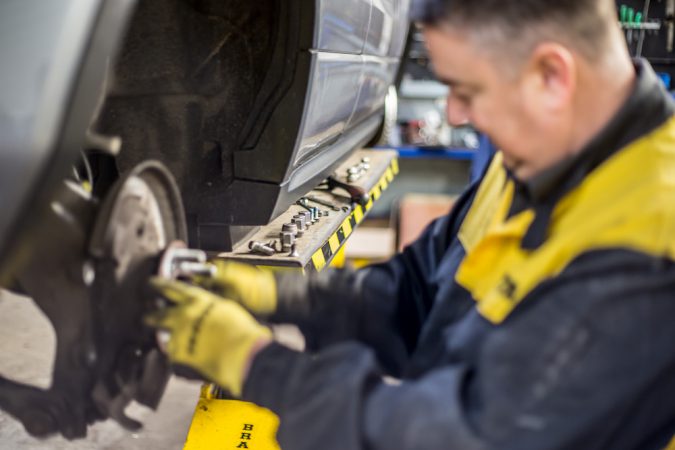
When you corner the automobile, it will reduce body roll. It is also beneficial to the braking process. The significance of safety while driving an automobile cannot be overstated. As a result, shocks and struts are necessary.
How Can You Determine If Your Shocks Or Springs Aren’t Working Properly?
Unusual noises over bumps, significant body lean or shake in turns, or the vehicle’s front end sinking suddenly under severe braking are all symptoms of damaged shocks and struts. Shocks that aren’t working properly might compromise steering control and create uneven tire wear.
Signs Of Shock And Strut Failure
While shocks and struts deteriorate with time, your car’s ride control components may give you warning signs if something is wrong. Your vehicle’s steering, braking, and stability can all be harmed by worn shocks and struts. If any of these symptoms appear on your car, it’s time to schedule a Safety Triangle Inspection of your suspension system with your service provider.
More Than 50,000 Miles
One of the simplest ways to determine if your shocks or struts need to be replaced is to glance at your odometer. Expert specialists recommend upgrading your shocks and struts every 50,000 miles for the best driver safety, performance, and comfort.
Routine maintenance and replacement with high-quality shocks or struts may also save you money in the long run, as undetected shock and strut faults can quickly escalate to more expensive suspension faults.
Housing That Has Been Dented Or Destroyed
Dents or cracks in the shock or strut housing are other visual symptoms that may need to replace your shocks or struts. You or your professional installer can also find broken and worn mounts or worn bushings.
If your shocks or struts are dented or broken, other suspension parts are likely harmed or forced to work harder, resulting in premature wear. Included in this category are the spring seats, which may have been damaged by corrosion or corrosion-related corrosion, as well as any auxiliary brackets attached to the strut. If the shocks or struts have cracks or dents, have them replaced right away using high-quality parts.
Fluid Leakage
If you detect any form of fluid leaking from your car, it’s a clue that something isn’t quite right. Fluid leakage can be caused by strut or shock damage, which occurs when the top seals are damaged or worn. Dirt and debris might clog the shock and strut. To absorb the force of the road, shocks and struts require hydraulic fluid. The car will roll more efficiently without it.
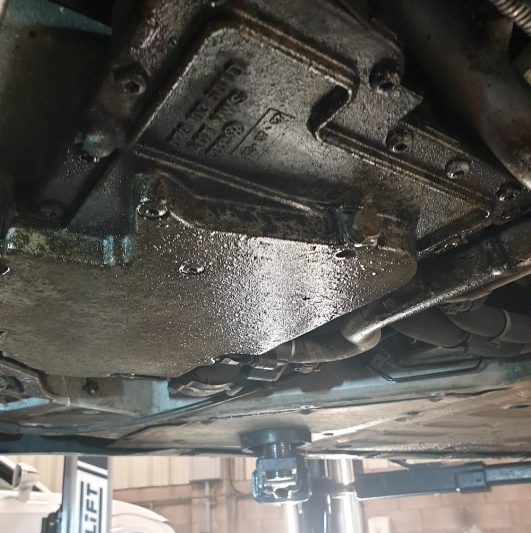
Reduced Braking Capacity
Shocks’ principal function is to absorb the force of the car against the road. This is especially true when the vehicle is braking. Brakes apply force to the wheels to stop them, the suspension system directs that force to the rest of the car.
Shocks that aren’t working properly can’t absorb as much force as they should when a vehicle comes to a halt. According to the Royal Automobile Club research, automobiles traveling on 50% worn-out shocks took an average of 11% longer to stop.
This is the equivalent of up to two vehicle lengths at motorway speeds, quickly resulting in a crash. The capacity to stop quickly and efficiently is crucial for the safety of vehicle occupants and other motorists on the road.
Problems With Acceleration And Turning
When a rear-wheel-drive car accelerates, a huge quantity of torque is generated. The torque is absorbed and redistributed to the front wheels when the suspension is in good working order. This allows the vehicle to accelerate smoothly.
When shocks fail, the car loses its capacity to distribute force across the vehicle, leaving the back wheels to handle most of the load. The wheels may lose contact with the road due to the unequal torque distribution, which is known as “acceleration squat.” Because you’re in such a dangerous situation, keeping your shocks in good operating order is critical.
Crosswinds Cause The Vehicle To Swerve
Is your car rocking back and forth as you go past a heavy truck? Do severe crosswinds make driving a nerve-wracking experience? If this is the case, likely, your shocks or struts aren’t working properly.
In windy conditions, when shocks and struts lose their dampening effectiveness, your car becomes less stable. This is significantly more obvious and dangerous for light trucks, SUVs, or cars pulling substantial loads. This is a clear indication that your shocks and struts need to be replaced.
Control Issues On Bumpy And Rough Terrain
Shocks and struts that aren’t working properly might make it challenging to navigate through slopes, potholes, and other uneven surfaces. They can cause your wheels to bounce or rattle, making it difficult for you to maintain control of the car.
In certain conditions, it may appear that your car is not making contact with the road. An unusually wobbly or uneven ride often indicates suspension flaws. This can increase the risk of slipping in the rain, therefore, it’s critical to remedy the problem immediately.
Disturbing Noise
A failing shock absorber’s symptoms include noise coming from the rear wheels and sounds like a pounding vibration. This is an important signal that you should not ignore. The struts are removed when the bushings and shocks lose their ability to sustain the strut due to wear.

As you drive, you’ll hear the knocking sound as you touch the metal. Tire scalloping and cupping can also produce similar sounds. The uneven tire wear that develops due to such an issue produces a terrible “bouncy” shock noise.
Squats From The Back End/ Dives From The Front End
The struts and shocks keep the car steady during acceleration, as previously stated. When they are out of shape, you may observe the back end stooping or the front end “lunges.” In essence, these vehicle components do not appear to be sturdy enough to support the weight.
You’ll have better control and more stopping distance once the struts and shocks are changed. As a result, you’ll have more confidence in emergency driving scenarios and stay safe on the road.
Vibrations In The Steering Wheel
The vibration emerging from the steering wheel is one of the signs of poor shock absorbers. Observing such vibrations while you drive through tough terrain or on a bumpy road may appear to be quite typical.

However, there is an issue when you start feeling such vibrations on a smooth asphalt road. The struts and shocks and the steering stabilizer could be the source of the problem.
Uneven Or Early Tire Wear
Check your tires for any uneven or rapid tread wear as another clue that your shocks and struts are worn or damaged. Premature tire wear, mainly if it occurs just on one side, can be a clear symptom of a worn shock or strut. So, be wary of the symptoms of bad shocks. You can also inspect the tires for warping or scratching.
Both are caused by the shock or struts’ inability to manage the suspension, causing the tires to bounce and deteriorate unevenly while driving. Various other variables can lead to early or uneven tire wear, so if you see them, have your car inspected by a professional installer to check if worn shocks or struts are to blame.
What Is The Severity Of A Rear Shock Failure?
It’s never a good idea to drive around with faulty shocks. Your automobile will bounce all over the place, and if it is excessively bouncy, it could be deadly. You may not realize your shocks are bad until they are replaced, and then your car feels radically different!
What Is The Bounce Test For Shock Absorbers?
A bounce test is one way to determine if your shock absorbers are on their way out. Press up and down on the car’s front or back, depending on which wheel is the issue until it’s bouncing in sync with you. When you come to a complete stop, a healthy shock absorber should only bounce a few times. It’s a clue that something is awry if the car bounces excessively or not at all.
When It Comes To Rear Shock Absorbers, How long Do They Last?
Your shock absorbers should be able to go roughly 50,000 miles before they need to be replaced, according to the general rule of thumb. Their longevity, however, will be shortened as a result of the mistreatment they experience.
If you drive a 4×4 or drive on bad roads frequently, you may anticipate the additional wear and tear from extensive use to limit the life of your vehicle. On the other hand, drivers who spend most of their hours on highways or in well-kept neighborhoods can expect their shocks to last much longer.
How Much Rear Shocks Replacement Cost?
Shocks can be replaced in pairs. In comparison to the struts, these would be less expensive to replace. Struts, as previously said, are a structural component that is highly sophisticated.
The average cost of replacing a pair of shocks ranges from $250 to $580. It will cost between $150 and $300 in labor to complete the job.
If you buy shock absorbers separately, they will cost you anything from $50 to $140. As previously stated, if you need to replace all four shocks and struts, multiply the costs by two. This will provide you with an estimate of the cost of replacement.
More specifically, the rear shocks replacement cost ranges from $227 to $360. The parts range in price from $78 to $175. The mechanic/labor would cost anything from $150 to $190. Please keep in mind that the price of a luxury vehicle may be greater. The same may be said about high-end sports cars. This is due to the usage of sophisticated shocks and struts in luxury vehicles.
How Is Rear Shock Repair Going To Be Completed?
A single set of shocks takes roughly 2-3 hours to replace. However, minor tasks, such as replacing a spring may take less time. It could take a long time to finish the suspension renovation. The steps are as follows:
- The rear shock absorbers will be examined, and a ‘bounce’ test will be performed.
- After removing the wheels, the old shock absorbers will be disconnected and discarded if they need to be replaced.
- The suspension and steering components will be evaluated for wear and damage, and new shock absorbers will be installed.
- To ensure proper operation, the wheels will be replaced, and the vehicle will be checked.
Rear Shock Replacement Tips From A Mechanic
- To ensure that the vehicle handling stays steady and predictable, shock absorbers should always be replaced in pairs.
- If your rear shock absorbers are worn down or leaking, your tires and other suspension and steering components will wear out faster or unevenly, and stopping distances will increase – especially in rainy weather or slippery roads.
- The ‘bounce’ test is a simple way to see if your rear shock absorbers are worn out. This is an easy exam to perform. If your vehicle continues to bounce after you release one of the corners, your shock absorbers aren’t operating properly and may need to be replaced.
- It is always advised to replace both shocks on one axle rather than just one. Replacing one can affect your car’s stability and, in extreme cases, render it dangerous.
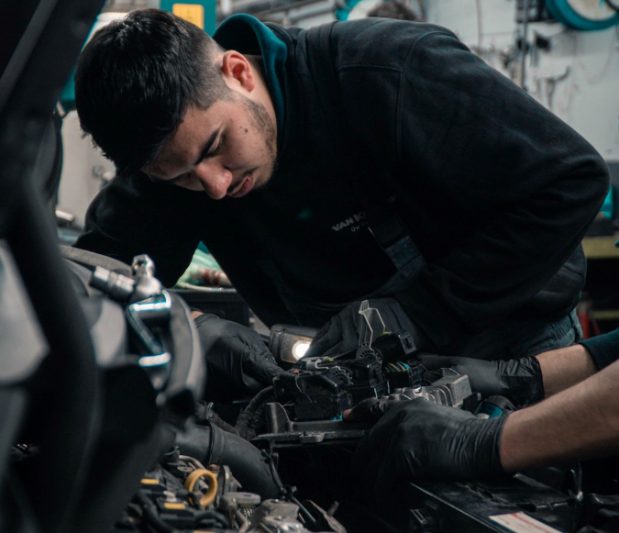
- Front shocks are frequently more difficult to replace than rear shocks. This is since front shocks have the springs built into the shock—in other words, they are a complete strut.
- The rear shocks replacement cost is strongly influenced by whether or not you wish to replace the coil springs and top mount bearings simultaneously.
- After any suspension maintenance, the mechanic always recommends getting a wheel alignment.
- The sway bar link can be difficult to remove, and depending on the automobile type, it is frequently destroyed during the shock removal process. If your sway bar link is installed on your shock and you have to remove it to repair the shocks, the mechanic strongly advises you to replace that in minimum rear shocks replacement cost.
What Is The Significance Of Replacing Worn Or Failed Rear Shock Absorbers?
The rear shock absorbers are in charge of absorbing the majority of the road vibration transmitted through the vehicle’s body. They also ensure that your wheels and tires stay on the road at all times.
Shock absorbers that are worn out or leaking can diminish tire grip on the road, lengthening stopping distances, especially in emergency situations, and reducing your vehicle’s traction and handling abilities. Shock absorbers that are old or leaking not only make your car ride uncomfortably, but they can also put you and other drivers in danger.
Is It Possible For Me To Replace The Rear Shock Absorbers Myself?
If you want to replace your rear shock absorbers yourself, you’ll need to be a skilled and experienced home mechanic:
- Place chocks or wedges under the wheels that will remain on the ground when you park your automobile on a flat or level surface.
- To raise the problematic wheel as high as possible off the ground, jack up the car.
- Lower the vehicle onto jack stands, which should be placed under the factory lift point. This should give you ample space to work on the car.
- By jacking up the suspension you’ll be working on, you can relieve some of the pressure. If you’re replacing both sides of the shocks, do one side at a time.
- Using the appropriate size socket or wrench, remove the shock mounting bolts.
- You should now be able to remove your vehicle’s malfunctioning shock absorber.
- Replace both the faulty shock and the fastening screws with new ones.
- You may need to make a minor adjustment to the bracket if the shocker is challenging to fit. Manoeuver them around slightly if necessary to get your new shocks to work properly. When tightening the mounting bolts, use the proper torque.
- Remove the floor jack from underneath your vehicle and lower it to the ground.
- Remove the chocks and perform a test drive in your vehicle.
Is It Necessary To Replace Both The Front And Rear Shock Absorbers At The Same Time?
Shock absorbers, both front, and rear are vital parts of vehicle suspension that absorb shocks from dips and potholes, allowing your automobile to ride pleasantly and reliably. If only one of the front or rear shocks is broken, it is not required to replace both. However, it’s normally preferable to repair both front struts and rear shocks in a pair. This is because a new shock absorber will handle road bumps more effectively than an old one.
Facts about Replacing Shocks and Struts
- Shock absorbers and strut assemblies dampen oscillations from the suspension springs to provide a smoother ride and contribute to a vehicle’s handling by providing a pivot point for the steering system.
- Shocks and struts can wear out earlier than their expected average lifespan of 50,000 to 100,000 miles, which can compromise a vehicle’s ride quality, handling, braking performance, and tire life.
- Strut suspension carries the weight of the vehicle higher in the car body and renders the vehicle more stable and less likely to roll.
- The cost of a typical shock and strut replacement can range from $450 to $1,100 depending on the type of vehicle suspension and location.
- Purchasing replacement shocks and struts can cost anywhere between $150 and $900 per assembly, and it is recommended to replace them in pairs.
- Mechanics charge an estimated labor cost for replacing a shock and strut assembly, which can range anywhere from $150 to $300 per assembly, and dealerships may charge even more because of their affiliation with the vehicle’s manufacturer.
- Mechanics almost always recommend a wheel alignment after a strut replacement, which can cost between $150 and $200, to prevent uneven tire wear and extend tire lifespan.
- DIY auto repair may save on labor costs, but mishandling springs on a set of struts can cause severe injury.
- Symptoms of failing shocks and struts include knocking, thumping, or rattling sounds, bumpy ride, dips in the front or rear end when accelerating or braking hard, body rolls during turns, and “cupped” tire wear pattern.
- It is possible to remove either the shocks or the struts, but operating the vehicle with a mix of old and new dampers may produce unpleasant results.
Final Verdict – Rear Shocks Replacement Cost
Shock absorbers are an important part of your car’s suspension system. They not only absorb road vibrations and bumps, so they do not enter the cabin, but they also collaborate with the suspension springs to keep your wheels and tire on the road. Wear and tear on shock absorbers can lead to rough and uncomfortable rides, as well as premature wear on other suspension and steering components, resulting in poor handling.
Shock absorbers degrade with time and must be changed if they are not performing properly. It is recommended that the shock absorbers be replaced every 35,000 miles. A bounce test is a simple way to see if you need new shocks. You’ll also get an approximate idea of how much rear shocks replacement cost. Visit bestnetreview.com for more automotive tips.

